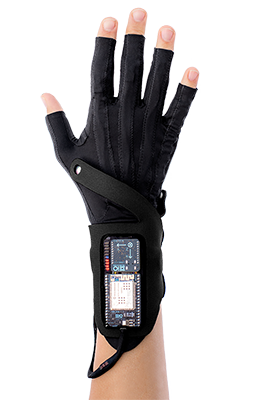As Intel prepare to announce the winners of their Make It Wearable competition, we thought it’d be a good time to consider what kind of impact wearable technology could have on our lives in the upcoming years. Although some companies have already taken the plunge into creative designs, we’ll also consider future uses of this technology and how it could offer a whole new wave of innovation by applying it in new contexts.
In the hotly competed arena of smart watches, the name on everyone’s lips over the last few weeks has been, as usual, Apple, following their unveiling of the Apple Watch – the idea of connecting our wearable gear to our other personal devices could prove to be the next big thing for consumers, although Samsung have only seen limited success. The touch screen technology previously working with iPhone and iPad has had to be readopted for a much smaller screen, and experts are hoping that the watch can keep its promises once launched.

Intel’s Make It Wearable competition has also shown how wearable wrist wear can have an impact on daily life, as Team Nixie designed a flying drone with a video camera attached. After removing it from their wrist and setting it off, the drone can record someone’s actions either for personal reasons (e.g, putting it on YouTube) or can later analyse the information to determine how one can improve in a sport, whether they be golfers or cyclists, footballers or runners.
Wearable health bands are becoming more normalised across the world as it allows doctors to monitor their patients on a daily basis, without too much interfering equipment or wires. Apple’s latest iOS update also introduces HealthKit, which amongst many other functions, includes ways of transmitting important data to your local doctor, and allowing localised monitoring by patients themselves. This could potentially expand to monitor babies within the womb and after birth, using processing provided by such devices as Intel’s Edison chip to send data back for analysis. The data could then help doctors and parents to react quickly should there be any problems and ensure the best healthcare possible for the baby.

Imogen Heap’s latest ventures into the world of wearable tech have been overwhelmingly reported in the press; she has designed various wearable accessories to create new ways of writing and recording music. Her Mi.Mu gloves take inspiration from the Theremin, using various sensors and feedback devices to alter and shape music to one’s whim.
They can also interact with the stage itself, meaning that should Imogen move to stage right she can alter the overall sound of her performance to feel like a choir singing. The project is yet to be fully funded but is reaching its goal quickly, meaning that this product could be released relatively soon.